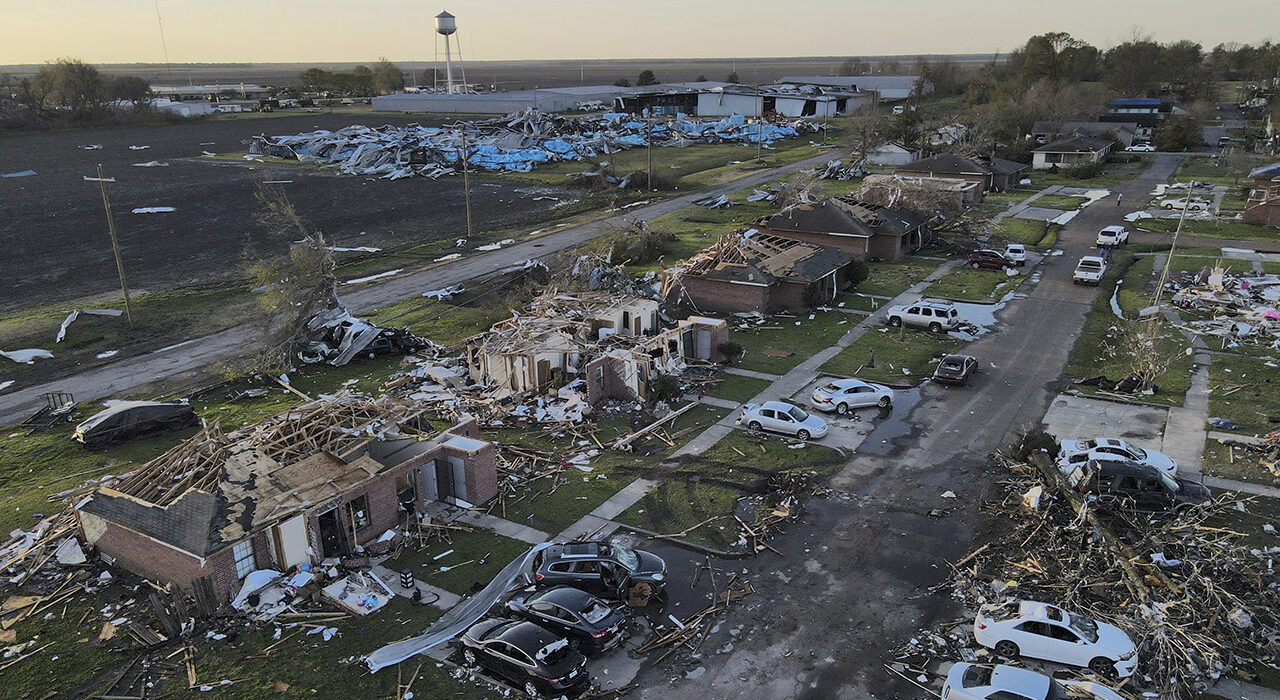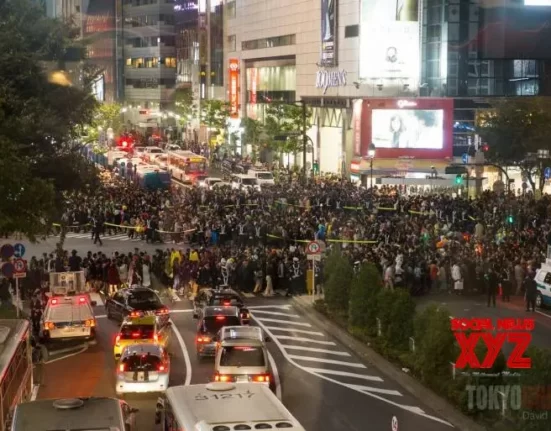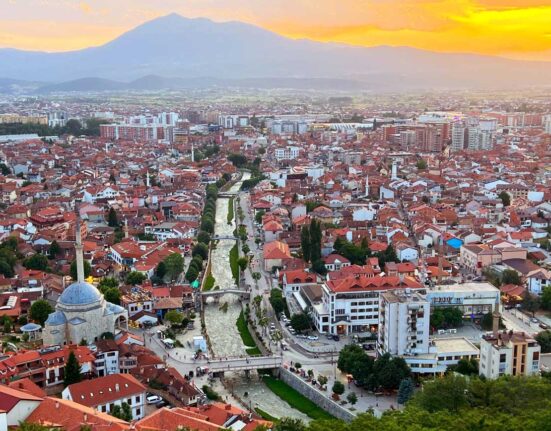On September 4, a dangerous typhoon, Jebi, made landfall in Kobe and Osaka. Its powerful winds caused severe damage, especially to bridges and airports.
Several coastal locations, including artificial islands and Kansai International Airport, suffered from storm surge-induced flooding. A field survey was conducted two days after the typhoon made landfall, investigating areas suspected to have experienced severe storm surges.
Winds
Typhoon Lan is moving northwestward over the Kansai region and will reach the Sea of Japan late August 14-15. The storm will bring strong winds, heavy rainfall, high waves and tidal surges. These conditions may cause dangerous coastal flooding.
The typhoon is expected to weaken into a tropical storm by the time it crosses the Kansai region late Aug. 14. The heavy rain is forecast to be accompanied by localized flooding and landslides.
Coastal flooding was observed during Typhoon Jebi in September 2018 in the cities of Okinawa, Hyogo and Osaka (Le et al. 2019; Mori et al. 2019). Jebi caused significant structural damage within the temperate coral communities along the southern coastline of Shikoku Island with wind speeds upwards of 158 km/h. The majority of this damage was associated with the development of coastal floods (Mori et al. 2019).
In addition to the damaging effects of typhoons, their associated rain can also lead to mudflows and debris flow. The combination of these factors leads to hazardous situations such as the flooding of rivers and roads, as well as flooded homes and businesses.
The mudflows and debris flows are often caused by the breakdown of drainage systems, causing the overflowing of riverbeds or streams. In many cases, the overflowing water is toxic and can pose a danger to human life.
Moreover, the high intensity wind and rainfall can cause serious damages to infrastructure, such as flooded roads, damaged buildings and power outages. This will cause significant disruption to transportation and communication services.
This will especially be the case for the Kansai International Airport (KIX), which is a major hub of international travel in Japan.
The typhoon has already forced the suspension of rail and road services, while the number of foreign tourists visiting popular sightseeing spots is dropping. It is estimated that the KIX runways will be closed until early October, and the number of domestic flights will also decline significantly. The typhoon is also likely to affect port operations, affecting the transport of cargo and cruise ships. This will have a direct impact on the economy in the area.
Rainfall
Japan is hit by about 20 typhoons per year, mainly in the autumn, and heavy rainfall is common during these storms. When the rain becomes concentrated, it can lead to floods and landslides.
Typhoons also bring very high river peak flow rates, which can inundate buildings and roads. As such, it’s important to check local weather reports and river water level information before going outside.
In addition to causing flooding, the heavy rain can also cause mudslides and power outages. When this happens, it’s important to follow the advice of local authorities and stay indoors until the storm has passed.
During the storm, watch for official warnings on TV and radio. It’s a good idea to stay off of steep hills and mountains, especially if the weather looks bad.
Japan is very accustomed to the effects of typhoons, and most cities and towns are built with safety in mind. Buildings comply with strict construction regulations, and they are designed to withstand earthquakes, strong winds, and typhoons. In the event of a typhoon, the Japan Meteorological Agency issues warnings that are available in English on TV and radio, as well as on its website.
A storm surge can inundate buildings and streets, as well as disrupt the flow of traffic. One of the most famous examples occurred in 2018 when Kansai International Airport, located on a man-made island in Osaka Bay, was inundated during typhoon Jebi.
While the airport was able to resume operations after the typhoon, it’s important to remember that this was a serious storm with heavy damage. As the world continues to warm, typhoons are becoming more powerful and are expected to increase in intensity. This means that more and more damage will be caused by these storms, making them a significant natural disaster threat. Coastal areas, ports, and critical airports will all be affected.
Coastal Flooding
The storm surge (tidal surge) that accompanied typhoon Jebi inundated areas of the cities of Kobe and Osaka and their surrounding coasts. This was particularly the case for areas located outside of coastal defenses such as artificial islands and Kansai International Airport.
This is one of the main reasons why people in Japan evacuate to higher ground when a strong typhoon approaches, especially those living in low-rise houses or flats. This type of evacuation is also important for residents living in high-rise apartment buildings and other types of high-rise structures that cannot withstand a typhoon’s impact or the associated waves and storm surge.
A number of TV news channels and Social Network Services such as twitter, facebook, or instagram, reported that many coastal locations along the cities of Kobe and Osaka including artificial islands and Kansai International Airport were flooded.
These reports were made on the day that typhoon Jebi made landfall. As a result, the public was well aware that the storm surge was expected to be severe.
On the afternoon of 4 September, the Japan Meteorological Agency (JMA) issued a storm surge warning for coastal areas of Hyogo, Osaka, and Wakayama Prefectures and a yellow warning (the lowest level on a three-tier system) across the rest of the country.
According to the JMA, tidal flooding was likely caused by both a storm surge and large waves. It was estimated that the maximum water level would be T.P +3.90 m in Osaka and T.P +2.80 m in Kobe. The JMA also reported that the design storm surge levels of the coastal defenses in Kobe and Osaka were not reached during the event.
The JMA warned citizens that if the tidal waves reach a height of more than 3 meters (10 feet), the area around Kansai International Airport could be inundated. The JMA advised passengers to check the status of their flights and make arrangements accordingly if necessary.
JSCE conducted a field survey two days after the typhoon passed through the city of Kobe (Survey Points H1 and F1), Fukaehama town in Kobe City, and Suzukaze town in Ashiya City. The purpose of the survey was to verify whether the floods were caused by a storm surge, and if so, to measure the maximum inundation height at each location.
Power Outages
The area around the typhoon bullseye in west Japan experienced major disruption and damage from the storm. Many areas were flooded by the heavy rainfall, and some 400,000 households lost power. The roads and railways were closed as well, causing travel problems.
The Kansai International Airport (KIX) flooded, and an ocean tanker that was unmoored by the winds drifted into the bridge connecting the airport’s man-made island to the mainland. Thousands of passengers were stranded overnight, some for as long as 18 hours, before ferries and speedboats were used to evacuate them on Wednesday.
Other airports in the region also suffered from flooding and wind damage, with some flights canceled or delayed. Many roads were blocked by landslides and debris, and rail services in the western Kii Peninsula were halted as well. The typhoon also affected agriculture and fishing, with some crops being damaged or destroyed by the heavy rain.
Thousands of people were evacuated from their homes, and many businesses in the region shut down. Universal Studios Japan in Osaka, a popular theme park that attracts tens of millions of visitors each year, was closed for a second day on Wednesday but is expected to reopen Thursday. Many factories in the area halted production, including automakers Daihatsu Motor and Panasonic.
The weather also caused power outages, with some parts of Japan experiencing a blackout for several hours or more. The country’s electricity company warned that the outages could last longer as the typhoon continues to move north.
Japan has been preparing for the arrival of a series of strong typhoons since the start of 2023, and its authorities have urged residents to take precautions. Some schools have been forced to close and the government has advised travelers not to go out on the islands.
The Ministers emphasized the need for strengthened cross-domain capabilities, including land, maritime, air, space, and cyber domain awareness to prevent the threat of armed attacks on Japan from the sea, air, and ground. They reaffirmed their commitment to deepening cooperation in these areas, including sharing information through the Joint Cyber Situational Awareness Center.




